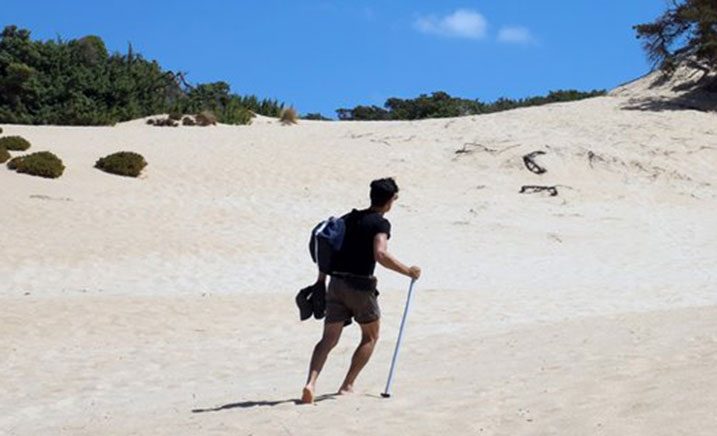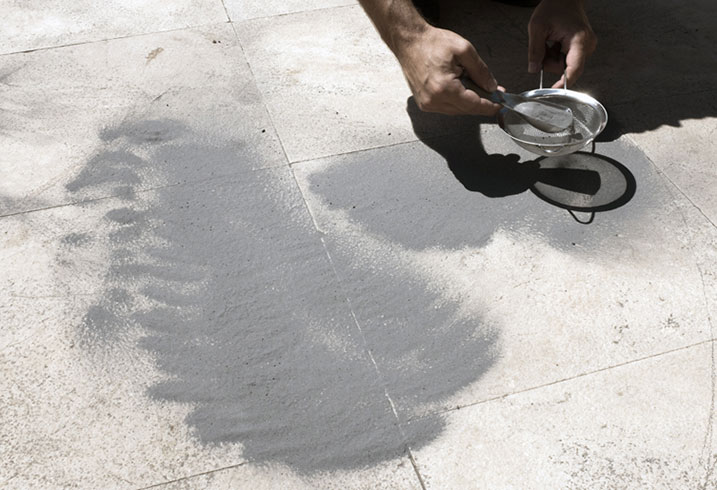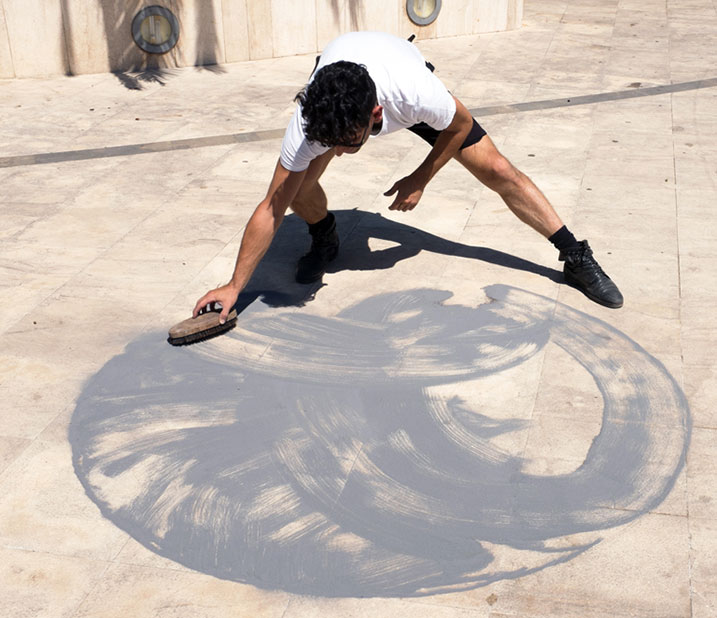/2016/
Pata-archeology
Iron powder and magnets
Experimental archeology talk by Carmine Piras
Video by Monica Dovarch
Anyone who has even a small interest in philosophy often encountered in his reading the Kantian concept of reality in it-self. It is symptomatic of its liveliness the fact that it still current in academic debates (2) (3). This concept was created to describe something unknowable. The desire to work with this concept was mixed with the excitement of dealing with an impossible target. To bring a metaphysical entity in the world is of course an inappropriate task, both from a philosophical and logic perspective. It is, however, in pursuing an impossible target that many unexpected things can appear and the chances of finding something interesting become unusually high.

According to Paul Klee, the gray (point) can be understood as a source from which the colors black and white born: “If we express it in terms of the perceptible (as though drawing up a balance sheet of chaos), we arrive at the concept grey, at the fateful point between coming-into-being and passing-away; the grey point. The point is grey because it is neither white nor black because it is white and black at the same time. It is grey because it is neither up nor down or because it is both up and down. It is grey because it is neither hot nor cold; it is grey because it is a non-dimensional point, a point between dimensions“.(5).

Robert Morris justified his choice of medium gray for his work Untitled (Corner Piece) and Untitled (L-Beams) ‘64: “(…)Obviously things exist as colored. The objection is raised against the use of color that emphasizes the optical and in so doing subverts the physical. The more neutral hues, which do not call attention to themselves, allow for the maximum focus on those essential physical decisions that inform sculptural works(…)“ (6).
Deleuze talk about the gray-point theory in his lectures on painting (7), the more I listened to the lesson about Paul Klee, the most the logic of my choice became clear. Deleuze point the grey as an initial chaos, a needed first fecond disorder. I immediately felt the possibility of a solid starting point for my new work and the companions was pleasant.
It was not too hard to get this kind of gray color with acrylics, but I had the impression that I can still go closer to my goal if I could get an extremely matt surface. In the search for pigments that corresponded to this gray I came across a gray powder pigment found on Ebay.de, surprise: it was pure iron and it seemed immediately my Middle Gray. I found myself playing with a material almost impalpable, made of tiny, identical particles. Somehow I felt the need to be able to find the iron powder directly in nature.

The Japanese metal forging craftsmen used the pure iron powder found on beaches to build their Katana swords. I discovered 2 years ago that in Sardinia an experimental archeologist theorized extraction of pure iron from the sand in Nuragic Age. What a coincidence for a work based on origins. The dating of the beginning of the use of iron and steel during nuragic civilization is controversial. Carmine Piras (8), sculptor and experimental archaeologist, theorizes that to work basalt or granite copper and bronze are not sufficient strong: only the hardness of iron or steel would allowed to affect these rocks. According to Piras hypothesis, using the black sand (during a storm, waves deposit the iron on the beaches of the West coast of Sardinia) allows you to get a ferrous paste that can be transformed in mold in utensils. The iron powder path led me to try to retrieve it in the Sardinian beaches: Pata_Archeology was born as a verification procedure that uses the typical tools of experimental archeology practices. The basis of this experiment are a survey on limits of scientific research and creative properties of the absurd and nonsense typical of pataphysics.
Note:
(1) ‘Gestes et opinions du docteur Faustroll, pataphysicien‘ (1898), Alfred Jarry. ‘Pataphysics. A Useless Guide by Andrew Hugill: pataphysics lies around the roots of Absurdism, Dada, futurism, surrealism, situationism, and other key cultural developments of the twentieth century’.
(2) ‘The Speculative Turn: Continental Materialism and Realism’, Bryant, Levi, Graham Harman, and Nick Srnicek. Re.Press, Melbourne, 2011
(3) Choses en soi. Métaphysique et réalisme aujourd’hui / Things in Themselves. Metaphysics and Realism Today – Colloque international. Paris 16-19 November 2016.
(4) http://en.wikipedia.org/wiki/Middle_gray
(5) ‘Teoria della forma e della figurazione’, P. Klee
(6) ‘Notes on sculpture’, Robert Morris, 1966
(7) ‘La voix de Deleuze. La peinture et la question des concepts’, Mars à Juin 1981, Gilles Deleuze
Read it here
(8) ‘Il ferro nell’età della pietra’, Giorgio Valdès
Read it on www.nurbet.it